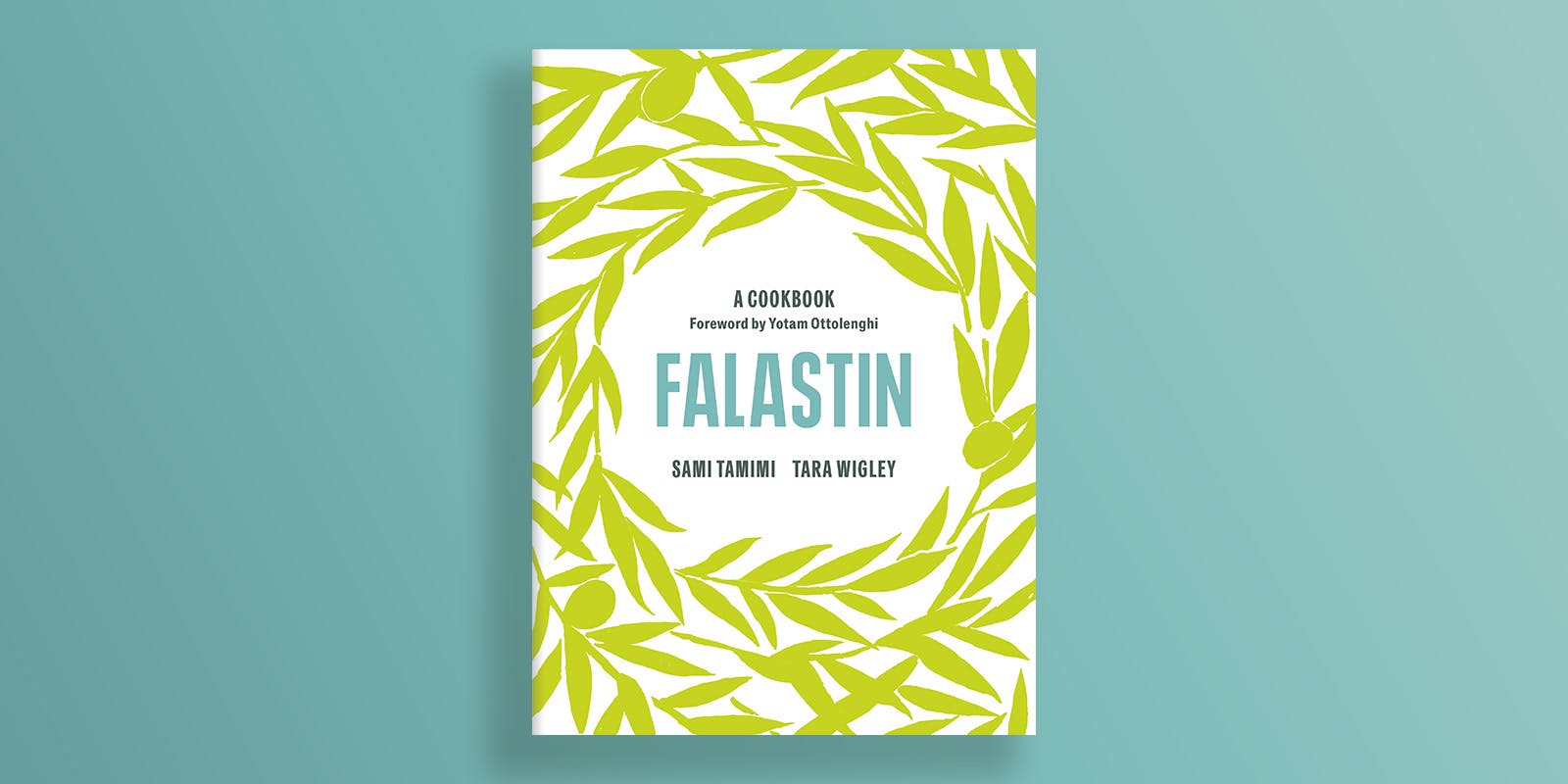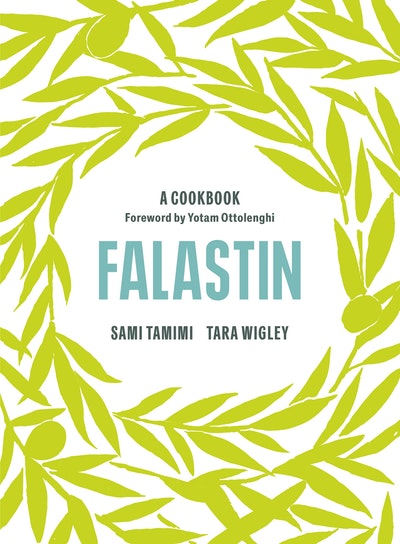Falastin authors Tara Wigley and Sami Tamimi lift the lid on Palestinian cooking.
What’s special about Palestinian food?
The connection between food, people and place is really strong in Palestine. It’s something people often talk about – the connection between food and land and identity – but it really is strong and real and present in Palestine. What makes the food special, therefore, is hugely tied up with where the ingredients have come from – the olives from the olive tree, for example, the maftoul, the dates – and all the people connected with the making and cooking and serving of the food. Food is special when it is eaten at the right time in the right place and with the right people. Eating chicken musakhan, for example – the chicken dish layered with sumac-onions and taboon bread, which showcases the quality of the freshly-bottled olive oil every autumn, when the olives are picked – is going to taste pretty special when you know the actual tree from which the olives that made the olive oil came from, and the farmer who picked the olives and the producer who made the oil.
If you had to summarise Palestinian cooking in one meal, what would be on the menu (and why)?
The table would be covered in a spread of dishes: every meal is a feast. Bread would always be there – torn and passed around to mark the start of a meal – along with lots of little bowls of olives and pickles to nibble on. Small dishes of olive oil, to dip the bread into, and a separate dish filled with za’atar to plunge into with your olive oil-soaked bread. Balls of labneh might also be there – yoghurt which is hung and strained and then rolled into bite-sized balls to be snacked on. This would all be a prelude to the main meal. There would always be one ‘celebratory’ dish – a chicken musakhan, for example, or maqluba – the ‘upside-down’ savoury cake of rice, meat and big chunks of vegetables – but then also a spread of other dishes to go alongside. Lentils and rice, grilled vegetables, bowls of fresh yoghurt. And bread, always more flat bread, used to scoop up the food and eat with, instead of cutlery, or to soak up any juices on the plate.
Five essential ingredients that set Palestinian cooking apart (and why)?
These ingredients are not exclusively Palestinian – they are used widely in the food across the whole Levant – but they are key ingredients for our Palestinian pantry.
Tahini: to enrich so many dishes. We love a drizzle of tahini sauce on so much of our cooking – spooned over grilled fish or roasted vegetables, for example – or used as a more substantive ingredient in which to bake meat koftas, for example. It’s also lovely on sweet things – just drizzled over vanilla ice cream or over your morning toast or porridge. Using ‘proper’ Arabic tahini (rather than the more claggy Cypriot kind) is a must, for us.
Olive oil: olive oil flows through the veins of all Palestinians and is there on every table, there to dunk bread into or to drizzle over your salad, fish, meat or vegetables. Palestinian olive oil is delicious: green and grassy and peppery and rich.
Lemon juice (or sumac): two different ingredients – sumac is a dried spice – but both bringing an essential astringency to the food of Palestine.
Allspice/cinnamon: these sweet spices are key to Palestinian cooking, there in so many of our recipes, bringing a sweet, soft and warming note.
Hospitality: this is a key ingredient in Palestinian cooking. No freezer is without enough food to allow for the possibility of 20 people turning up, at any time, hungry for a meal. The building up of the pantry – mooneh – with pickles, ferments and dried foods is also tied in with this, allowing for food to be around and available, year round.
Three essential condiments that any home cook can (and should) learn?
Shatta: the addictive chilli paste we have in our book. You can make it with green or red chillies. It’s a super simple recipe – finely slice your chillies, sprinkle them with salt and leave in fridge for three days before blitzing up with some cider vinegar and lemon juice. The results are addictive and can be spooned on near-on anything savoury: eggs, grilled fish or meat, roasted vegetables. It lasts in the fridge for far longer than it takes to eat.
Tahini sauce: the combination of tahini, lemon juice, garlic, seasoning and a splash of water is a near-on miracle. It’s a creamy, nutty, vegan way to enrich so many dishes. Make up a batch and keep in the fridge for a good few days.
Slow-cooked sumac onions: these are made especially for chicken musakhan – the national dish of Palestine which sees roasted chicken layered with sumac onions and flat bread but we always make more than we need. They keep in the fridge for three or four days and are lovely piled into all sorts of sandwiches or alongside grilled meat, fish or vegetables or just some plain steamed rice and cooked lentils.
Falastin is a contemporary cookbook, yet many of the recipes’ stories go back generations. What’s a dish that you would never modernise or trifle with (and why)?
Chicken musakhan and Maqluba, the upside-down savoury rice cake. These are time-honoured traditional Palestinian dishes, perfect as they are, in need of no changing or tweaking. The changes we have made to recipes have been either to give them a new little twist to surprise and keep fresh – a pop of sumac onions in our falafel, for example, or making tabbouleh with leftover rice rather than freshly-cooked bulgur – or to make our recipes work for the busy home cook who wants to make something quite quickly during the week when they get home from work. Recipes whose stories go back generations are magic and important and all good things but, as you say, this is a cookbook for the contemporary cook. As well as over 110 recipes, though, we also tell a lot of stories about the people and places or Palestine, so our hope is that the very broad narrative of Palestine – today’s Palestine and yesterday’s and tomorrow’s – is one that our readers will get a very real sense of.
Something you learned while researching and creating this book?
Tara: So much! That there are few things in life not improved by the addition of some lemon juice, a drizzle of tahini and a sprinkle of za’atar. And that Bethlehem is really hilly [she knows, having run a marathon there!].
Sami: That you can leave home for over a decade and, upon returning home, feel as though nothing has changed. That food and the traditions surrounding food are timeless. And that your family will always tease you for your growing tummy.
Something that surprised you while researching and creating this book?
Tara: That writing about Palestine is really hard because words are really loaded, but that if you work hard enough to get the right ones it will be the most rewarding thing in the world. And that tahini literally goes with everything.
Sami: The book that we ended up with is so different from the one I imagined, but I couldn’t be more proud of the result. It was a huge journey for me personally, and for Tara and I together.
What lesson could Australians palates learn from Palestinian cooking?
That chickpeas for breakfast sets you up for the day.













